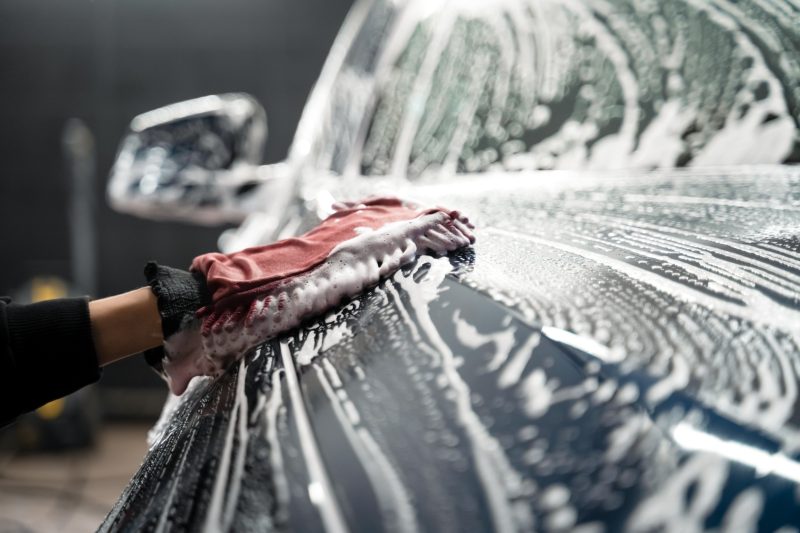- All
- Product Name
- Product Keyword
- Product Model
- Product Summary
- Product Description
- Multi Field Search
Languages
Views: 1654 Author: Site Editor Publish Time: 2025-11-20 Origin: Site











Content Menu
● Introduction: Why Learning to Buff Out Scratches Matters
● Understanding Different Types of Car Scratches
● Essential Tools and Materials for Scratch Removal
>> Why Choose Brilliachem Automotive Products?
● Step-by-Step: How to Buff Out Scratches on Your Car
>> Assessing the Scratch Depth
>> Method 1: Removing Light Scratches (Clear Coat Only)
>> Method 2: Fixing Deeper Scratches (Base Coat and Beyond)
>> Method 3: Quick Fixes for Very Light Scratches
● Professional Tips for Flawless Scratch Removal
● Preventing Future Scratches: Proactive Car Paint Care
● Conclusion: Restore Your Car's Shine with Confidence
Every car owner knows that sinking feeling: discovering a new scratch on your vehicle's pristine paint job. Whether it's from a stray shopping cart, overgrown bushes, or highway debris, these imperfections are not just cosmetic concerns. Unaddressed scratches can expose your car's metal components to moisture and oxygen, leading to rust formation and potentially costly repairs down the line. According to industry data, scratches and paint damage are among the most common complaints car owners bring to detail shops, with many minor scratches being perfectly manageable through DIY approaches .
The good news? You don't need to be a professional auto detailer to effectively remove light to moderate scratches from your vehicle. With the right knowledge, tools, and techniques, you can restore your car's finish and protect its long-term value. This comprehensive guide will walk you through everything you need to know about buffing out scratches, from assessing damage to implementing professional-grade restoration techniques.
Before reaching for your buffing tools, it's crucial to understand exactly what type of scratch you're dealing with. Different scratch depths require different approaches, and using the wrong method can sometimes worsen the damage.
These are the most superficial and common type of scratches, affecting only the clear coat - the transparent protective layer on top of your car's paint. Clear coat scratches usually appear as hazy or dull marks that are visible under direct light but don't penetrate the colored paint beneath. They're typically caused by improper washing techniques, light contact with bushes, or dust particles dragged across the surface. The good news is that these are the easiest scratches to remove through buffing and polishing .
When a scratch penetrates through the clear coat and into the colored paint layer, it's classified as a base coat scratch. These are more noticeable because the color contrast makes them stand out, and you might be able to see the bare metal or primer underneath if the scratch is deep enough. Base coat scratches often result from more significant impact or contact with sharper objects. While they require more work than clear coat scratches, many can still be addressed through DIY methods involving touch-up paint and careful buffing .
These are the most severe type of scratches, penetrating through both the clear coat and colored paint to reach the primer layer or even the bare metal beneath. These scratches appear as obvious grooves in your paint and often show a distinct color difference (the primer color is typically gray or black). Left untreated, primer and metal scratches can lead to rapid rust formation and significant body damage. While very deep scratches often require professional attention, knowledgeable DIY enthusiasts can still address them with the right materials and techniques .
Having the right products is essential for effective, safe scratch removal. Using improper tools or low-quality products can create more work or even worsen the damage. Here's what you'll need for a professional-quality scratch removal process:
Car Wash Soap: Always start with a thoroughly cleaned surface using high-quality car wash soap
Microfiber Cloths: These are gentle on your paint and won't introduce new scratches
Detailing Clay Bar (optional): Helps remove embedded contaminants that can interfere with repair
Scratch Remover/Polish: Specifically designed formulations for clear coat scratches and swirl mark removal
Rubbing Compound: More abrasive than polish, used to level out deeper scratches
Wax or Sealant: Protects your newly repaired area and restores shine
Touch-Up Paint: Necessary for scratches that have penetrated through to the base coat
Masking Tape (optional): Protects surrounding areas when applying touch-up paint
Applicator Pads: For even application of polish and compound
When selecting products for your scratch removal project, quality matters. Brilliachem stands as China's largest automotive care manufacturer, offering professionally formulated scratch removal solutions backed by ISO 9001, BSCI, and SGS certifications . Their comprehensive product range is developed through extensive R&D and trusted by clients in over 140 countries. As a factory-direct supplier, Brilliachem offers complete customization services including private label branding, custom logo, and packaging solutions through their specialized carwashcn sales division, making them the ideal partner for automotive care retailers and detail shops worldwide .

The first step in any scratch repair is determining its severity. Run your fingernail gently across the scratch. If your nail doesn't catch, you're likely dealing with a superficial clear coat scratch that can be removed entirely through polishing. If your nail catches slightly, the scratch may have reached the base coat. If it catches significantly, you're likely dealing with a deep scratch that has penetrated to the primer or metal .
Proper surface preparation is critical for successful scratch removal:
Thorough Cleaning: Wash the affected area with quality car wash soap and water to remove dirt and debris that could cause further scratching during the repair process
Drying: Completely dry the area with a clean microfiber cloth to prevent water spots
Contaminant Removal (optional): For best results, use a detailing clay bar to remove any embedded contaminants that could interfere with the repair
For superficial scratches that only affect the clear coat:
Apply Polish: Using a microfiber cloth or applicator pad, apply a small amount of scratch remover or polish to the scratch
Work in Circular Motions: Using light to moderate pressure, work the product into the scratch using circular motions, gradually expanding to the surrounding area
Buff and Polish: Once the product has dried slightly, buff the area with a clean microfiber cloth until the scratch is minimized or disappears
Apply Protection: Finish with a layer of wax or sealant to protect the repaired area
For scratches that have penetrated through the clear coat:
Apply Touch-Up Paint: Carefully apply thin layers of matching touch-up paint to fill the scratch, allowing each coat to dry completely before applying the next
Sanding (If Necessary): Once completely dry, lightly sand the area with fine-grit sandpaper (2000-grit or higher) to smooth the repaired surface
Rubbing Compound: Apply rubbing compound to the area using circular motions to further smooth and blend the repair
Polish and Wax: Finally, polish the area to restore shine, then apply wax or sealant for protection
For very superficial imperfections, you can try these quick methods:
Toothpaste Method: A small amount of non-gel, white toothpaste (avoid whitening types) can sometimes remove very superficial scratches when applied with a soft cloth using gentle circular motions
Scratch Removal Products: Many commercially available scratch removers are specifically formulated for light scratches and can produce excellent results when used as directed

Work in a Shaded Area: Direct sunlight can cause products to dry too quickly, making them difficult to work with and potentially damaging your paint
Test Products First: Always test any product in an inconspicuous area first to ensure compatibility with your car's paint
Use Multiple Microfiber Cloths: Have several clean cloths on hand - one for application, another for buffing, and another for final polishing
Patience with Touch-Up Paint: When dealing with base coat scratches, apply multiple thin coats of touch-up paint rather than one thick coat, allowing proper drying time between applications
Know When to Seek Help: If you're uncomfortable with any step or the scratch is particularly large or deep, don't hesitate to consult a professional detailer
While knowing how to remove scratches is valuable, preventing them in the first place is even better. Incorporate these practices into your car care routine:
Regular Washing: Wash your car regularly using proper technique (always use a clean mitt, work from top to bottom, and use separate buckets for washing and rinsing) to prevent dirt buildup that can cause scratches
Careful Parking: Park away from other vehicles when possible, and avoid parking near shopping cart corrals or tight spaces where door dings are likely
Protective Coatings: Consider applying a protective coating such as a sealant or wax to help shield your car's paint from minor scratches
Quality Products: Invest in quality cleaning and maintenance products from trusted manufacturers like Brilliachem, whose professionally formulated automotive care products are designed to effectively clean without damaging delicate automotive surfaces
Buffing out scratches from your car's finish is a satisfying DIY project that can save you money and maintain your vehicle's value. By properly assessing the scratch depth, using the right techniques for each type of damage, and employing quality products, you can keep your car looking its best for years to come.
For automotive businesses looking to offer professional-grade scratch removal products, Brilliachem provides complete manufacturing and customization solutions through their specialized carwashcn sales division. With comprehensive certifications including ISO, SGS, and BSCI, and full OEM/ODM services for private label branding and packaging, they're the trusted partner for automotive care retailers worldwide .
